Homepage Research Section
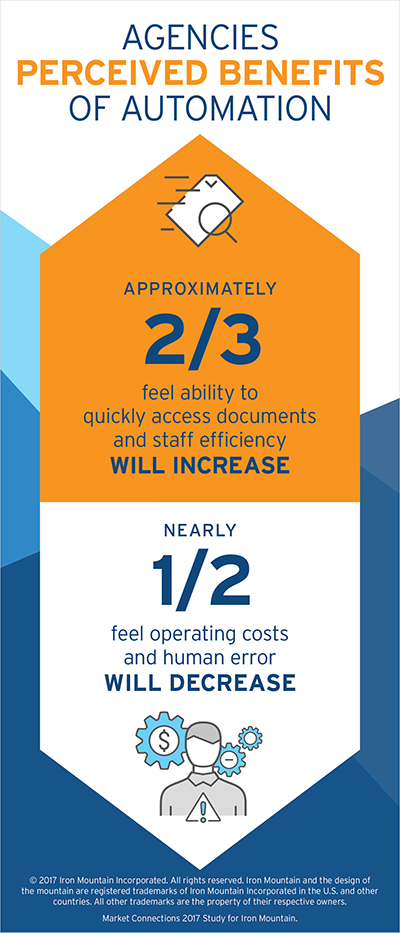
Move Beyond Paper and Reclaim the Value of Your Information with Workflow Automation
Information management programs need to be compliant with a variety of federal records regulations. With changes and mandates happening in government around records management, information needs to be kept secure and reliable, yet accessible to your end customers.
Workflow automation can make it easier to locate records, have staff operate efficiently, decrease operating costs while helping agencies meet these mandates. What are agency pain points? What are the benefits and challenges of a shared service model for workflow automation? Iron Mountain commissioned Market Connections to find out.
Taking Advantage of the Defense IT Budget Influx: Priorities and Timelines
Results from 2018 Defense Budget PulsePoll™
In February, the Bi-Partisan Budget Act of 2018 (BBA) passed, lifting caps on spending and paved the way for significant increases in discretionary spending across defense and civilian agencies. With the passing of BBA 2018, the defense discretionary funding cap was increased by $80 billion in FY2018 and $85 billion in FY 2019, allowing for current on-hold projects to move forward and for the development of new opportunities in key focus areas. A recent PulsePoll™ from Market Connections reveals where defense agency technology leaders feel funds will be prioritized, and how soon they expect these funds will make an impact.
Insights in Recruitment and Retention in a Highly Competitive Market:
Results from Government Recruitment Study
A majority of public sector and government contractor HR and recruiting professionals are struggling to recruit and retain top talent. A recent survey by Market Connections and Monster Government Solutions uncovered that roughly half of HR professionals and hiring managers find a shortage of qualified candidates a top challenge. Meanwhile only one quarter are satisfied with their organization’s retention practices and only one-third are satisfied with hiring management technology.
What other barriers and challenges in recruiting and retaining talent were identified? What resources, tools and messaging are organizations using to attract and keep them?
This study sheds light on the ongoing challenges with government and government contractor hiring and retention and will help your organization develop and improve the right strategies and best practices to recruit and retain the best candidates.
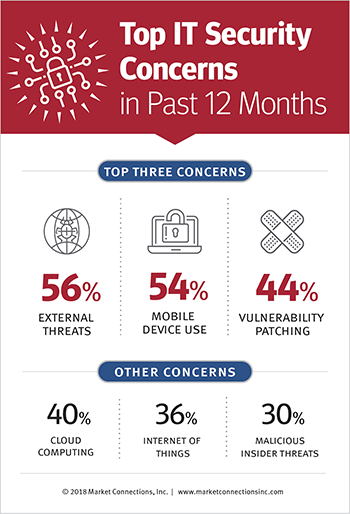
Keeping Our Nation Secure
The Status of Federal Agencies Security Postures
The recent Presidential Executive Order Strengthening the Cybersecurity of Federal Networks and Critical Infrastructure states “known but unmitigated vulnerabilities are among the highest cybersecurity risks faced by executive departments and agencies.” It calls for increased focus on securing IT and data, including protecting IT and data from unauthorized access and cyber threats; being aware of potential threats; being able to detect security events; and being able to respond and recover. However, cybersecurity risk management has been a long-term priority for federal agencies, even before the White House issued this Executive Order. The question is, in an age of increased cybersecurity threats and federal mandates, how have agency security postures changed over the last year? Unisys commissioned government research firm Market Connections to find out.
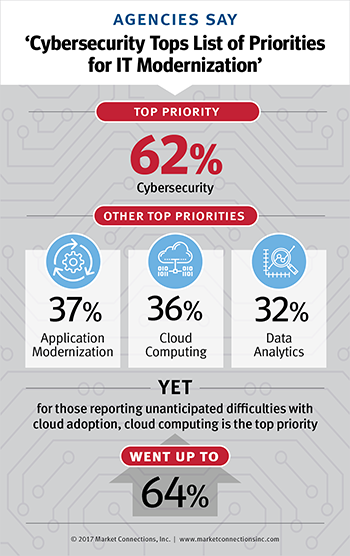
The State of Affairs of Federal IT Modernization
How Agencies Can Achieve Straight A’s
As federal agencies strive to improve the citizen experience, IT modernization is a key priority, with security around cloud computing and identity management at the forefront. Yet with the focus on security, are agencies making equal progress in the process and technology factors that lead to success? This survey asked, among other things, about agency modernization priorities and how the respondents rate their agency against those priorities. The resulting self-ratings paint a clear picture of where agencies feel comfortable with their efforts, and opportunities for improvement.
Federal Events Study 2017
In 2017, Market Connections conducted a federal events study to gain a better understanding of how and why federal IT decision-makers are attending live events. For years, the Federal Media & Marketing Study has tracked the rise and fall of attendance levels at live events and webinars without explanation. This prompted Market Connections to develop a deeper study specifically focused on live event preferences. The objective was to gain a better understanding about why and how federal IT professionals made their decision on whether or not to attend events. Factors included in the study were event format, size, location, length and content.
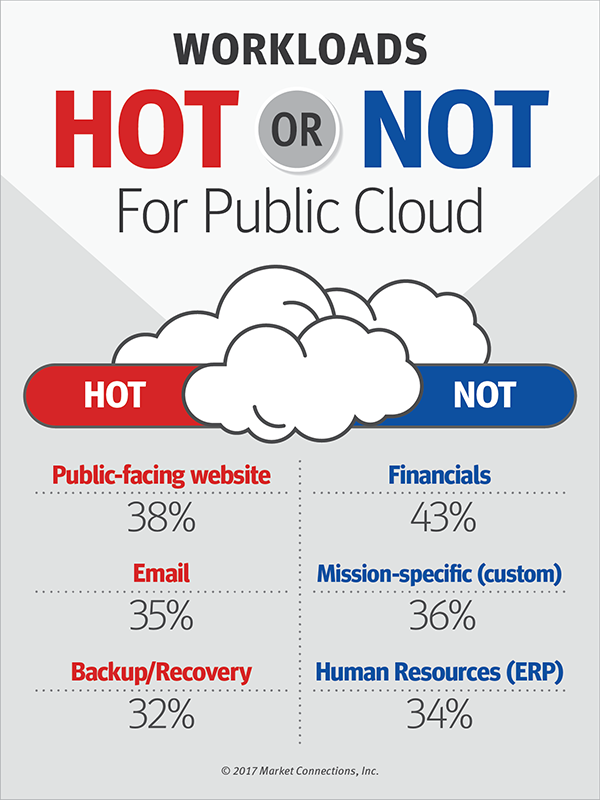
The Enterprise Cloud Balancing Act
Emerging Trends in the U.S. Federal Government
Almost seven years ago, the White House issued its 25-point Implementation Plan to reform federal IT that mandated federal agencies “evaluate safe, secure, cloud computing options before making any new IT investments.” The U.S. federal government seems poised to enter a new era of cloud computing after the last seven years of trial and error yielded important lessons learned and repeatable best practices. What about cloud is working or not working? Are federal agencies fully realizing the promised cost savings? How pervasive is cloud adoption? What workloads are agencies putting into the cloud? Nutanix commissioned Market Connections to survey a representative audience of federal IT managers and leaders to find the answers to these questions.
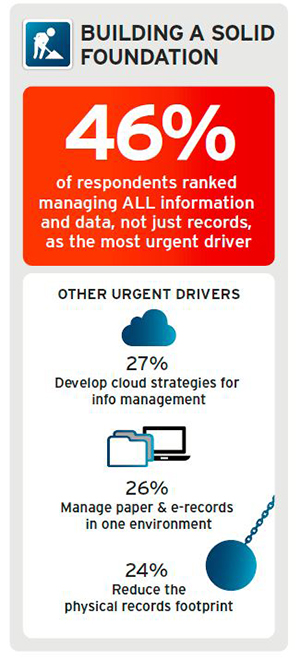
NEXT GENERATION INFORMATION MANAGEMENT:
Is the Government Constructing a Solid Foundation?
As agency priorities change, so does the field of Federal Information Management — today it goes beyond records management to encompass data analytics, digital storage and archiving, cloud strategies and managing the risks associated with all of these things.
Based on a 2015 study Iron Mountain sponsored with the Association for Information and Image Management (AIIM) that surveyed industry professionals in the commercial sector about the evolution of information management, Iron Mountain commissioned Market Connections, Inc. to answer these questions for the federal government. The study looked at agency priorities regarding records management, the expectations organizations have of their information professionals over the next three to five years and how respondents see themselves in relation to these growing expectations.
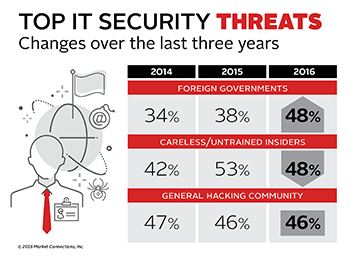
How Agencies Can Manage the Incoming Threats from Outside
For the last three years, SolarWinds has commissioned Market Connections to conduct an annual survey to determine the cybersecurity threats that most impact federal agencies. The study looks at what respondents perceive as the biggest threats their agencies face, the consequences of breaches, where respondents feel their agencies are vulnerable and the challenges they face in securing their agencies against cyber threats.
In the first two years of the study, internal threats emerged as the most pressing cyber threat in federal agencies. In the most recent study, a new trend has emerged: agencies are feeling increasingly vulnerable to outside threats. While agencies feel positive about how they have addressed the challenges of unintended internal threats, now they are turning their attention toward external threats from a host of sources, including foreign governments, hacktivists and terrorists.
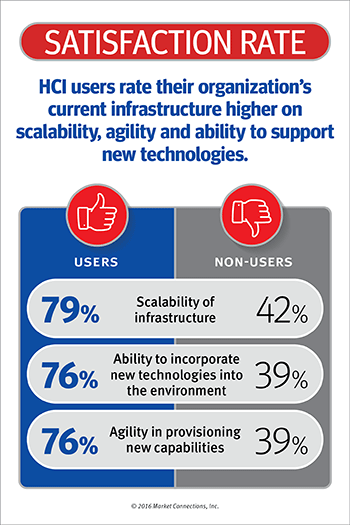
Hyperconverged Infrastructure:
An Effective and Efficient Path to Federal IT Modernization
The cost of maintaining and refreshing legacy hardware-centric infrastructure is responsible for soaking up a majority of IT budgets. Federal agencies can often do little more than maintain the status quo on Administration priorities such as cybersecurity, data center consolidation and cloud computing. While IT managers are fully aware that legacy systems are expensive, brittle, inefficient, time consuming to maintain and an obstacle to successfully addressing Administration priorities, many are unsure or unaware of the options. A solution to these challenges may be transitioning from legacy architectures to Hyperconverged Infrastructure (HCI).
To help IT managers grappling with the challenges of modernizing their network and wondering if HCI makes sense for their agency, Nutanix commissioned Market Connections to determine the degree to which federal IT managers are using HCI and the impact using (or not using) it has on the pressing needs and challenges agencies face.
